Pendleton Preservation Series
What is the Preservation Series?
These USA-made wool blankets are part of our Preservation Series, a unique collection that recreates historic weavings from across the Americas. Pendleton designers collaborate with museum curators and private collectors to select noteworthy work, establish provenance, and attribute historical textiles to the original weavers when possible. The descriptions of dyes, materials, sizes and age are drawn from curator notes on the original weavings. Each wool blanket is expertly dyed, woven and hand-finished in our American mills.
A portion of sales from each blanket helps fund Native American art and education programming and outreach at the Fort Lewis College Foundation and the Center for Southwest Studies.
Please note: many of the descriptions below refer to the curator notes on the original weavings. Pendleton’s versions are made of 82% wool/18% cotton, and are 64″ x 80″ unless otherwise noted.
PS01 – Early Navajo (Diné) Sarape, 1800-1850
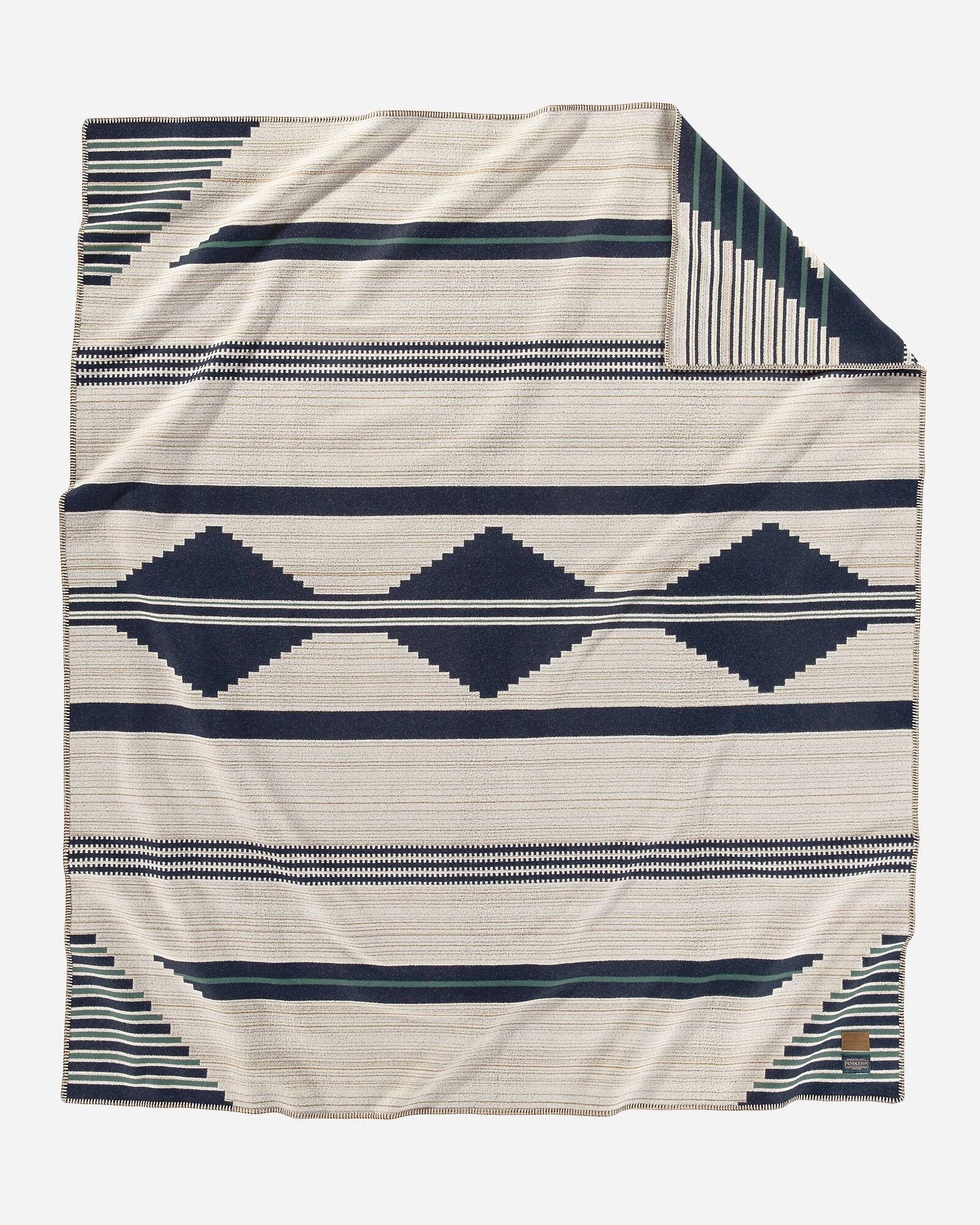
This very early weaving contemporary with the Ute-style First Phase Chief blanket. This unusual early sarape combined the simple striped and terraced stepped design elements in use at the time without incorporating red bayeta yarns. Woven of indigo-dyed blue, indigo with vegetal-dyed green, and natural white hand-spun churro wool yarns. The color scheme suggests a Rio Grande Valley influence. Based on an original weaving in The Durango Collection® (DC-NC-43), Center of Southwest Studies Collection #2000:03007
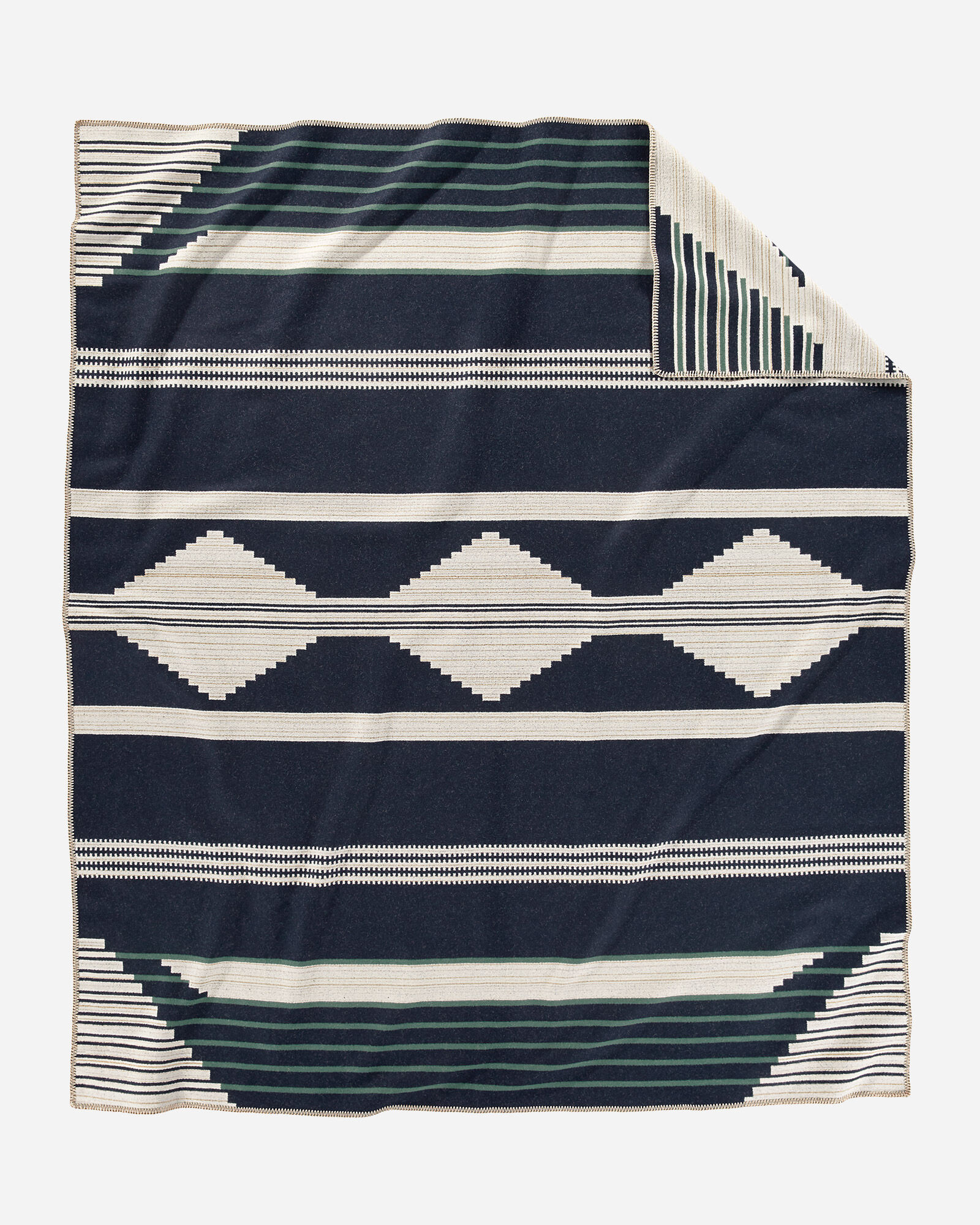
This design is the first in the Preservation Series to be offered as a bedding collection in multiple sizes. Choices are Twin (or robe), Queen, and King, with matching standard-sized shams offered as well. These blankets are completely made in the USA of virgin wool on a cotton warp.
See more information on the blanket here: PS01
PS02 – Navajo (Diné) Child’s Blanket, 1870
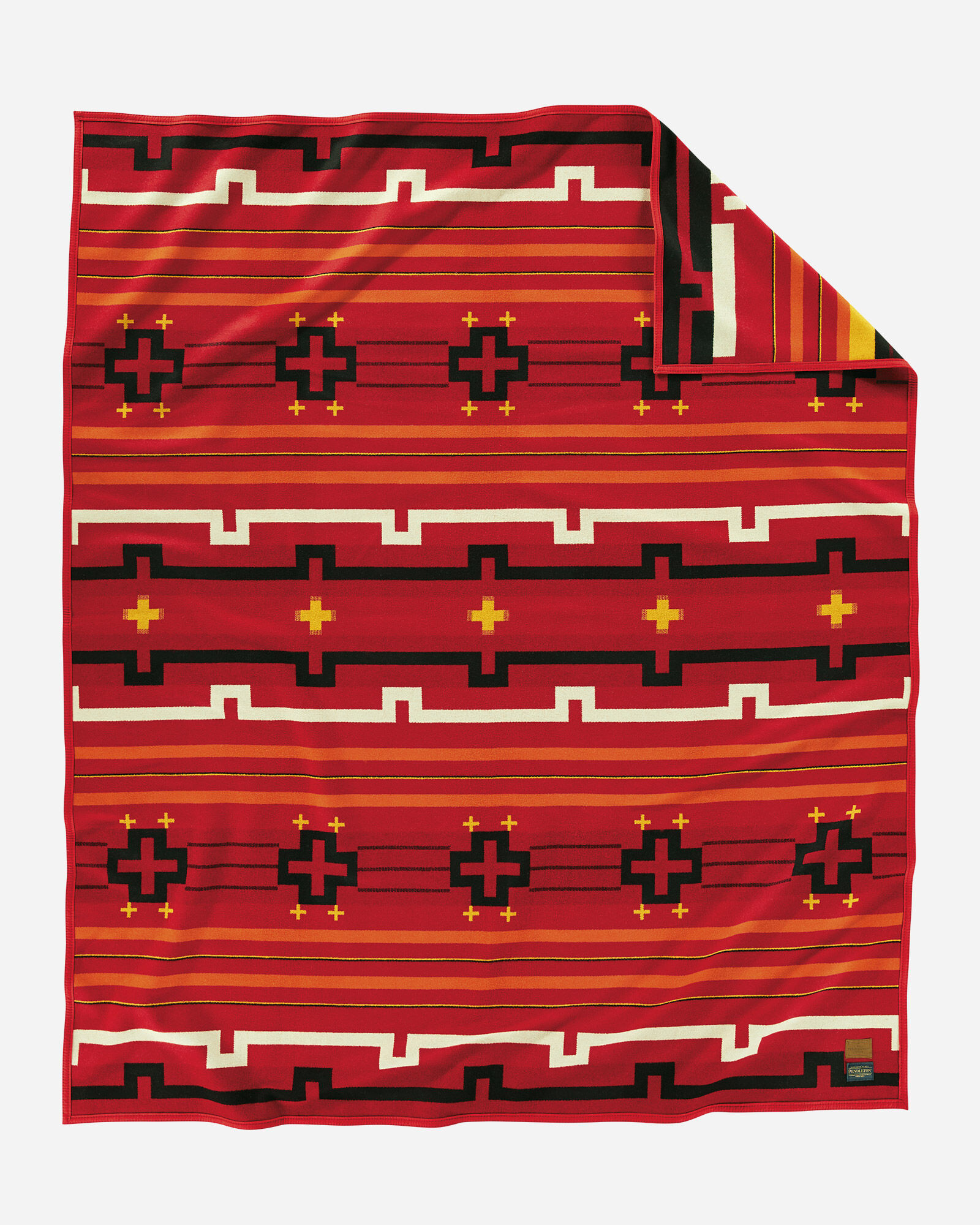
These weavings are referred to as child’s blankets because of their small size, complex patterning, and tight weave. This blanket is a wonderful example of the late Classic Period, and incorporates Spider Woman crosses in the design. The variation in the red color comes from red trade cloth that weavers unraveled and respun. Other colors are handspun gray and white wool and vegetal-and-indigo-dyed yarns. Based on an original weaving in The Durango Collection® (DC-NC-51), Center of Southwest Studies Collection #2000.03007
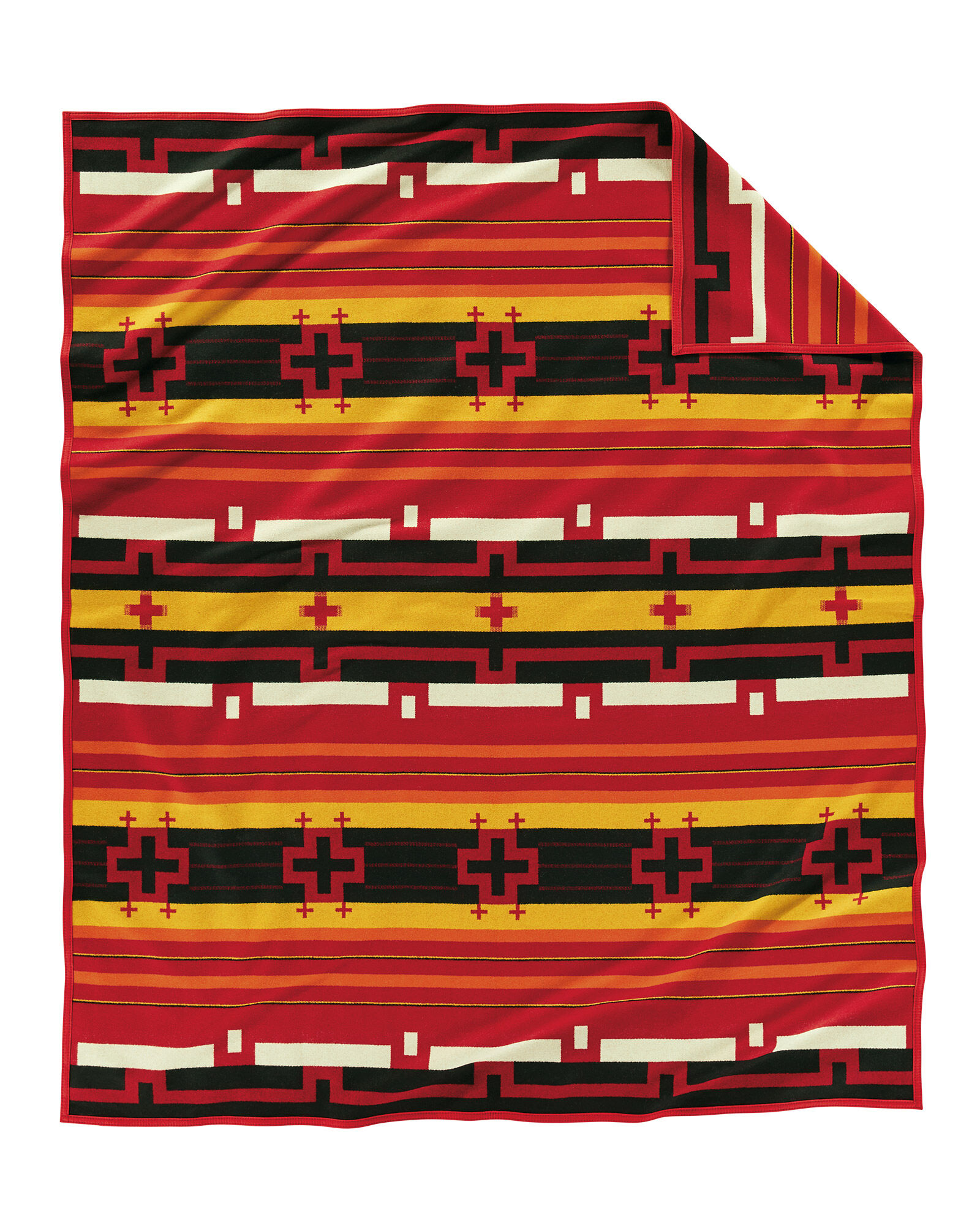
Though the original weaving on which we’ve based this blanket is referred to as a “child-size blanket,” the Pendleton version is woven in our traditional robe size of 64″ x 80″. The crosses represent Spider Woman, a powerful teacher and benefactor in Navajo legends who taught the art of weaving to the Dine/Navajo people. Her traditional home is atop the Spider Rock formation in the Canyon de Chelly National Monument.
See more information on the blanket here: PS02
PS03
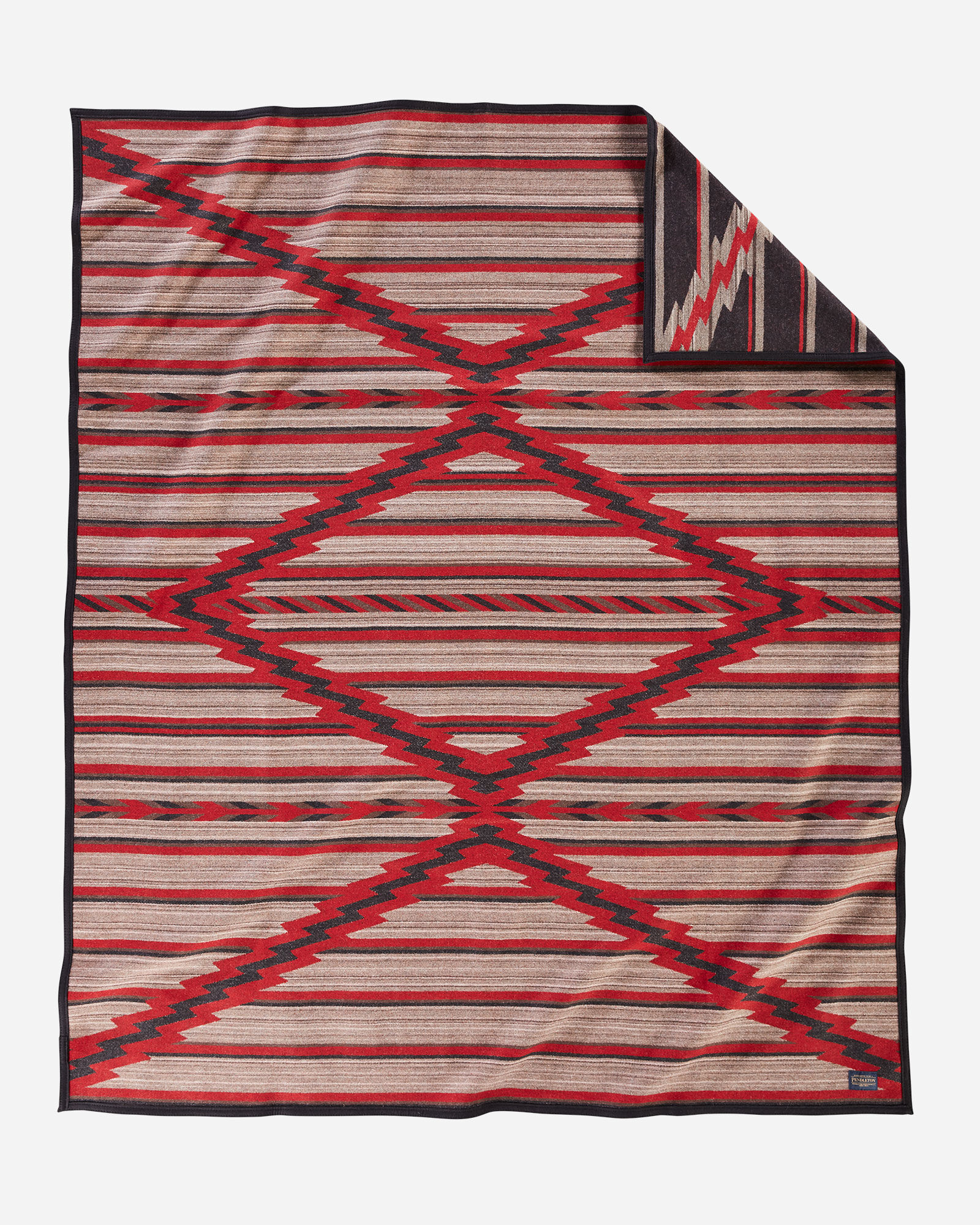
This unusual early striped Zuni blanket incorporates design elements found in Spanish-American weavings from the Rio Grande Valley in New Mexico. A combination of simple bands with central diamond and stepped designs was woven of handspun natural gray, dyed greens, indigo-dyed blue, plied commercial yarns, and red “Bayeta" wool. This design is based on an original weaving in The Durango Collection®, Center of Southwest Studies Collection.
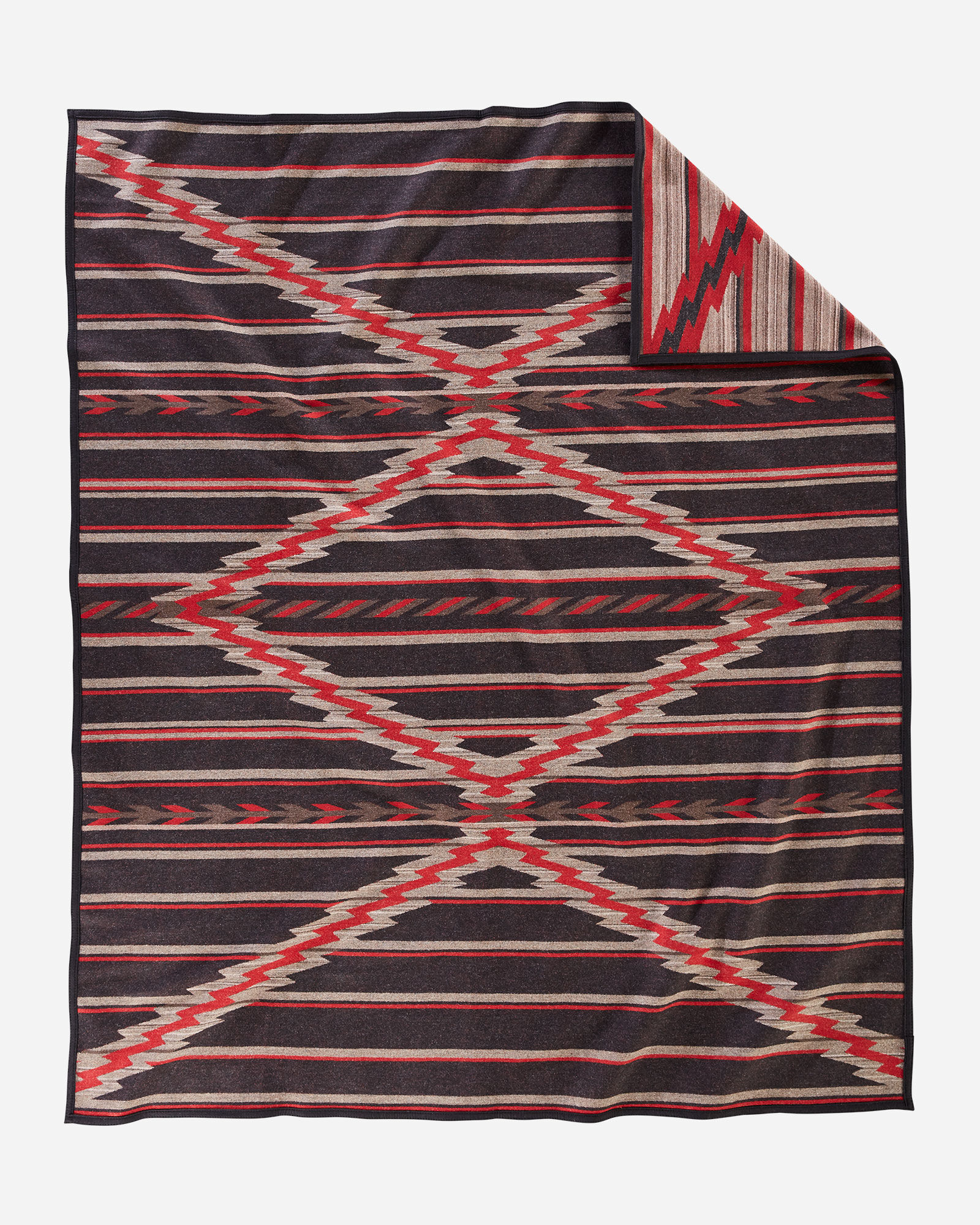
Bayeta is a red woolen flannel that has been raveled and respun. According to the Donald Ellis Museum website:
The term “bayeta" refers to bolts of machine-woven red flannel. Bayeta also refers to red yarns raveled from bolts of red flannel. By 1830, Navajo weavers were accomplished at dying handspun yarns with indigo but lacked the ability to dye handspun yarns with cochineal, which produced a deep red color in woolen yarns. The weavers’ only sources of red yarns were the yarns they raveled from bolts of red flannel imported either from England or Spain. Known among the Navajo and the Spanish as “baize" or “bayeta," and among Anglo- Americans as “red stroud" or “red trade cloth," red flannel was used for garment insulation by Anglo- American and Spanish-American settlers.
You can read more of that museum’s fascinating history of Bayeta yarn here: Donald Ellis Museum
See more information on the blanket here: PS03
